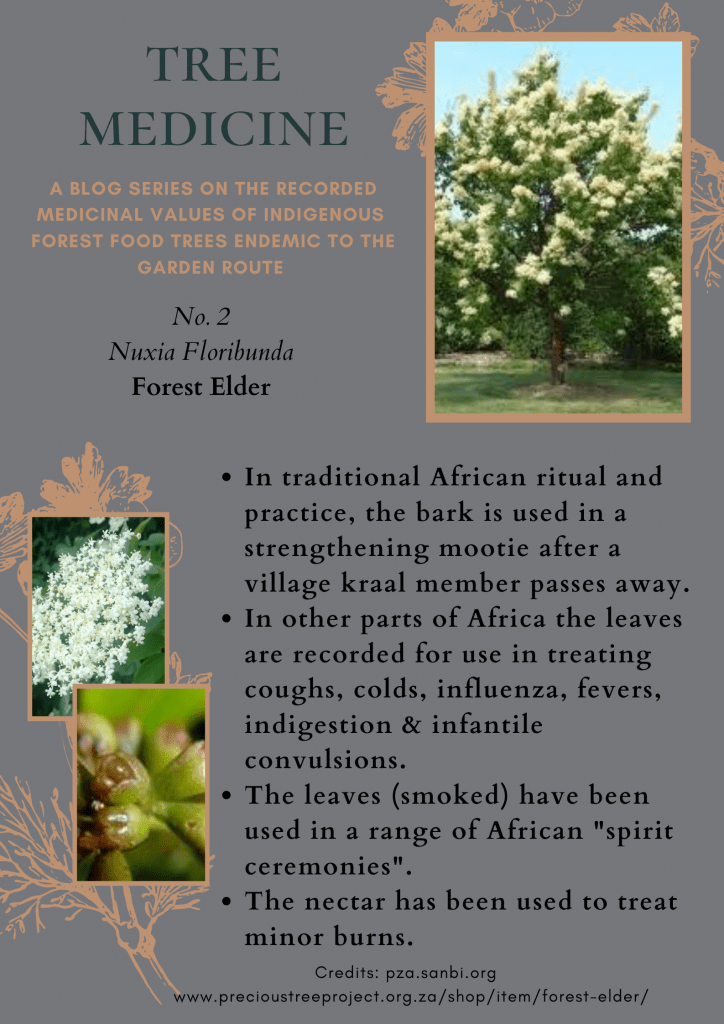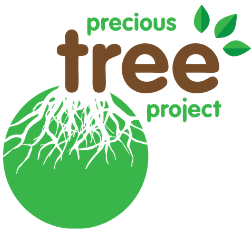
Scientific name: Nuxia floribunda Benth.
Family: Stilbaceae.
Common names: Forest Elder; Forest Nuxia; Wild Elder (Eng.); Bosvlier; Vlier (Afr.); umHlambandlazi, iThambo, Ingobese, Isanywana, umKhobeza (Zulu); iNgqota, isiKhali (Xhosa); Motlhabare (Northern Sotho); Mula-notshi; Mpupumwa (Venda).
The forest elder is widely spread in the coastal & mountain forest belts of SA, extending from the Cape Midlands through to the Limpopo. The forest elder is comprised of bark that is fibrous and stringy, leaves in whorls of three and the flowers which are bisexual. The sweet smelling creamy-white flowers appear in large clusters from late Autumn to end of Spring and are seen to be both self-pollinating and insected-pollinated, primarily bees, in search of nectar and pollen. Full flowering occurs usually every second year where an abundance of fruit on the tree develops.
Notes and tips:
a) Bear in mind when harvesting any indigenous tree to do so sustainably. Different trees and different parts of a tree have their own harvesting methods and periods throughout the year. The South African National Biodiversity Institute has informative harvesting tips on their website (SANBI link below))
b) As with any medication, when using plants for their medicinal values it is recommended that you seek professional guidance from a natural health practitioner and undertake appropriate research before use.
For additional information on germination, propagation, ecology, maintenance, etc of indigenous SA trees, go to: www.sanbi.org.za
Click here if you would like to sponsor a Forest Elder and help grow a mini forest!

